

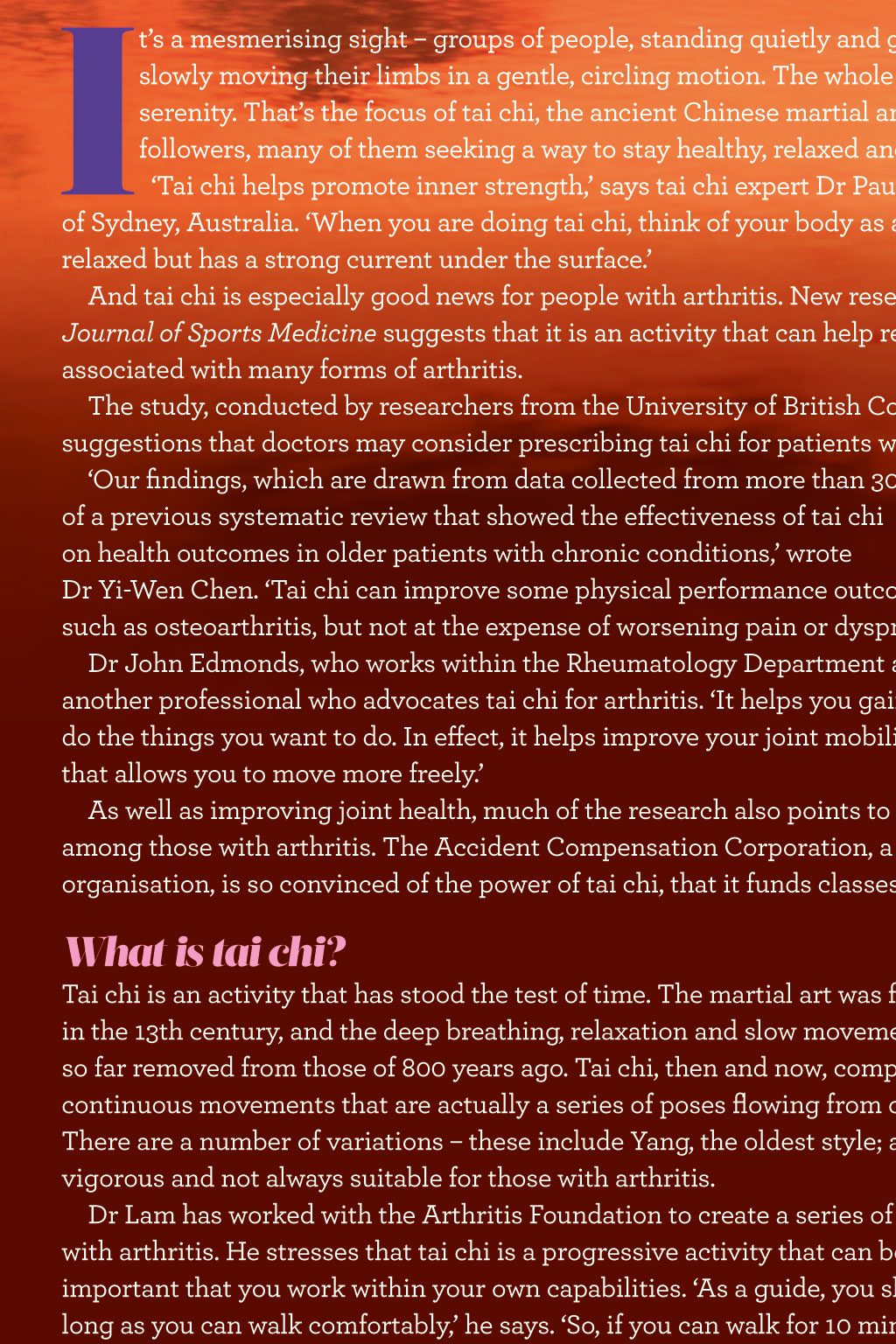
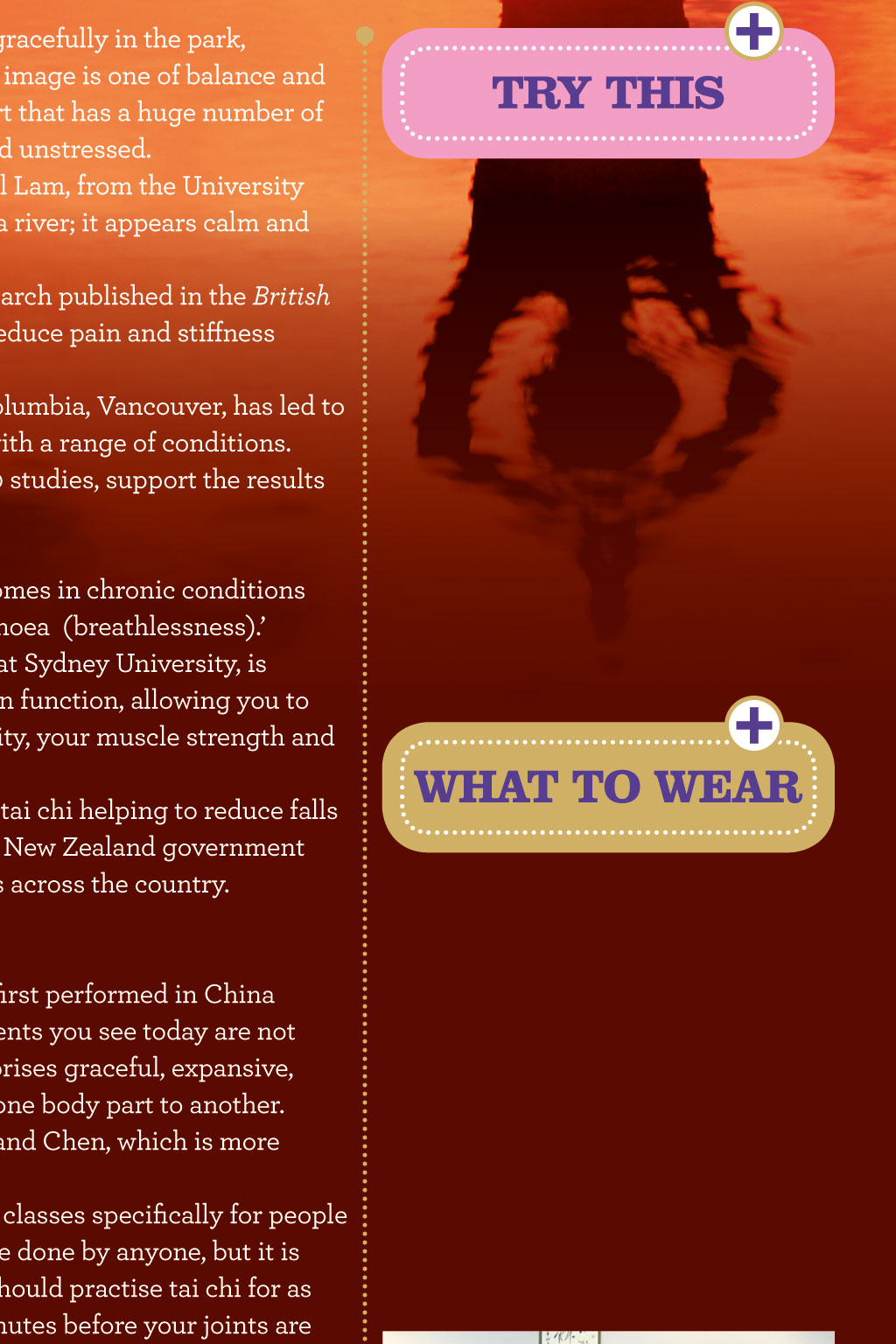
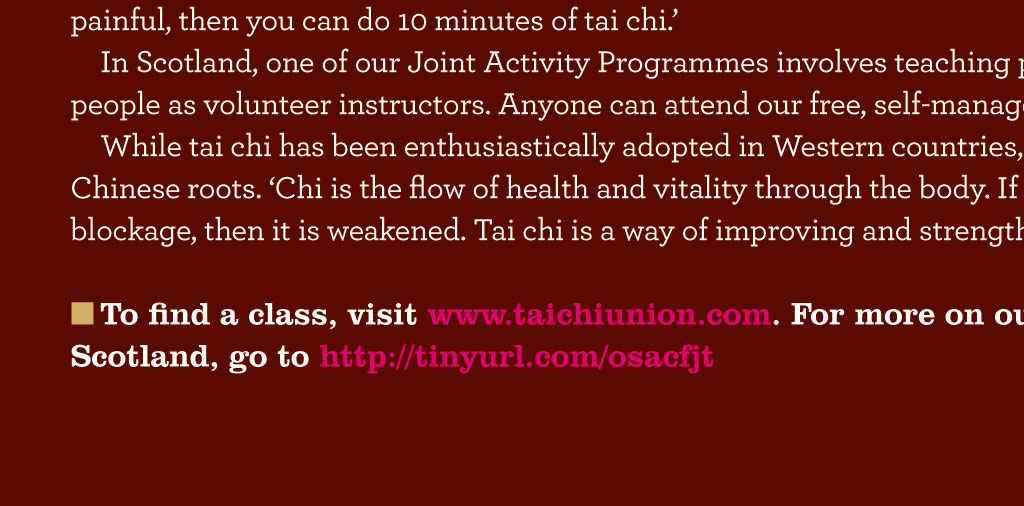
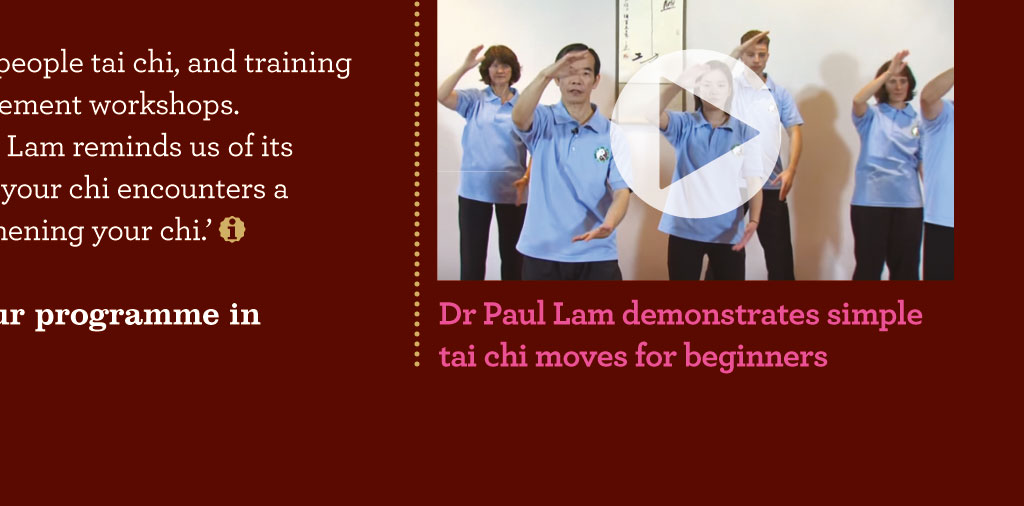






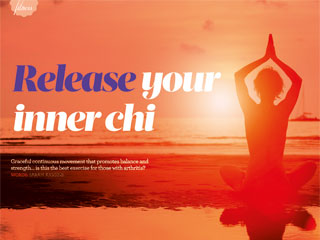
Release your inner chi Graceful continuous movement that promotes balance and strength is this the best exercise for those with arthritis? words: Sarah JuGGInS I ts a mesmerising sight groups of people, standing quietly and gracefully in the park, slowly moving their limbs in a gentle, circling motion. The whole image is one of balance and serenity. Thats the focus of tai chi, the ancient Chinese martial art that has a huge number of followers, many of them seeking a way to stay healthy, relaxed and unstressed. Tai chi helps promote inner strength, says tai chi expert dr paul Lam, from the University of Sydney, australia. When you are doing tai chi, think of your body as a river; it appears calm and relaxed but has a strong current under the surface. and tai chi is especially good news for people with arthritis. new research published in the British Journal of Sports Medicine suggests that it is an activity that can help reduce pain and stiffness associated with many forms of arthritis. The study, conducted by researchers from the University of British Columbia, Vancouver, has led to suggestions that doctors may consider prescribing tai chi for patients with a range of conditions. Our findings, which are drawn from data collected from more than 30 studies, support the results of a previous systematic review that showed the effectiveness of tai chi on health outcomes in older patients with chronic conditions, wrote dr Yi-Wen Chen. Tai chi can improve some physical performance outcomes in chronic conditions such as osteoarthritis, but not at the expense of worsening pain or dyspnoea (breathlessness). dr John Edmonds, who works within the Rheumatology department at Sydney University, is another professional who advocates tai chi for arthritis. It helps you gain function, allowing you to do the things you want to do. In effect, it helps improve your joint mobility, your muscle strength and that allows you to move more freely. as well as improving joint health, much of the research also points to tai chi helping to reduce falls among those with arthritis. The accident Compensation Corporation, a newZealand government organisation, is so convinced of the power of tai chi, that it funds classes across the country. try thIs what to wear What is tai chi? Tai chi is an activity that has stood the test of time. The martial art was first performed in China in the 13th century, and the deep breathing, relaxation and slow movements you see today are not so far removed from those of 800 years ago. Tai chi, then and now, comprises graceful, expansive, continuous movements that are actually a series of poses flowing from one body part to another. There are a number of variations these include Yang, the oldest style; and Chen, which is more vigorous and not always suitable for those with arthritis. dr Lam has worked with the arthritis Foundation to create a series of classes specifically for people with arthritis. He stresses that tai chi is a progressive activity that can be done by anyone, but it is important that you work within your own capabilities. as a guide, you should practise tai chi for as long as you can walk comfortably, he says. So, if you can walk for 10 minutes before your joints are painful, then you can do 10 minutes of tai chi. In Scotland, one of our Joint activity programmes involves teaching people tai chi, and training people as volunteer instructors. anyone can attend our free, self-management workshops. While tai chi has been enthusiastically adopted in Western countries, Lam reminds us of its Chinese roots. Chi is the flow of health and vitality through the body. If your chi encounters a blockage, then it is weakened. Tai chi is a way of improving and strengthening your chi. n to find a class, visit www.taichiunion.com. For more on our programme in scotland, go to http://tinyurl.com/osacfjt the essence of tai chi, according to dr paul Lam, is rooted through your feet; balanced through your body;expressed through yourfingers, so all the movements are veryexpansive. these two simple warm-up exercises are perfect examples: no. 1 mobilising the upper body Stand or sit, with your feet shoulderdistance apart. Relax your neck and let your chin drop naturally towards your chest. Slowly raise both arms until they are fully extended in front of you. Turn your hands so the palms are upwards and pull your hands slowly to your chest. Hold for a caption required here xxx xxx x x xx x xx x xx xxx xx xx xxx second, then push your hands back to full extension. Repeat this. When pulling and pushing, hold your muscle tension so there is a slight resistance to the move. no. 2 stretching the lower body Raise your hands so they are extended in front of you. Now slowly lower your arms and step forward with one leg and place your heel on the floor. As you raise your arms again, move the same foot backwards as far as you can behind you. Touch your toe to the floor. Repeat this movement a few times, reaching your foot further infront and behind you. Repeat thisexercise on the other side of your body. all you need are comfortable clothes that allow you to move freely. Its a good idea to wear layers so you can remove clothes when you get warm. Try these manuka awakening yoga pants (below), 48, John Lewis human performance engineering t-shirt (above), 35, John Lewis puma essentials gym t-shirt, 18, JJB Sport scoop neck t-shirt, 12.50, M&S straight leg joggers, 16, M&S nike core mesh motion trainers, 24, Sports Direct skechers Flex advantage trainers, 47, Sports Direct " , "20":"food Comfort food Fall in love with food again with Mary Berrys favourite dishes mary berry demonstrates some of her favourite recipes